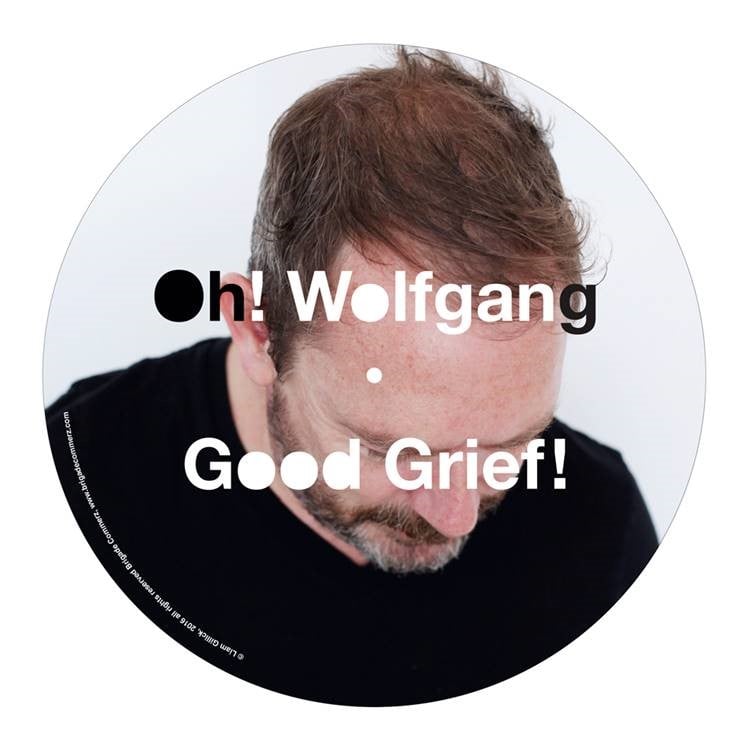People
Liam Gillick’s Latest Album Is a Retort to Critic’s Scathing Remark
We have the backstory in an exclusive interview.

We have the backstory in an exclusive interview.

Hili Perlson

On May 5, to coincide with Frieze week in New York, artist Liam Gillick—who also works as a musician—released a new album on the indie label Brigade Commerz Editions, mysteriously titled Oh! Wolfgang / Good Grief!
As the record is a hybrid production, oscillating between graphic art and sound, it goes without saying that the release comes as a limited edition of 100, pressed on 12-inch heavyweight picture vinyl designed by Gillick, and priced at €100.
Gillick, whose practice is associated with Relational Aesthetics, is notoriously conceptual in his approach to art-making—sometimes to the point of being “frustratingly intangible,” as Claire Bishop famously declared in her 2004 October Magazine article Antagonism and relational aesthetics.
Back then, Gillick replied to the critic with a counter article titled Contingent Factors: A Response to Claire Bishop’s ‘Antagonism and Relational Aesthetics’ in which he highlighted Bishop’s “uncritical reinforcement of leading market figures.”
Well, it turns out that Gillick is at it again, and that the two tracks on the new album (which you can listen to here, and here) were composed as a retort to another critic.
This time, what irked the artist was an article published in the German monthly Art – das Kunstmagazin this past January, penned by the album’s titular Wolfgang Ullrich, and titled Kunstwerke haben oft zwei Leben (Artworks often have two lives).
There, Ullrich argues that Gillick’s artworks, and those of a certain type of artists, in fact enjoy a double status: first as a conceptually elevated piece at the exhibition space, and second, as a handsome yet unobtrusive object in a collector’s apartment. In its second life, Ullrich claims, the artwork simply becomes Siegerkunst (his own coinage), which roughly translates as “art for winners.”
As an artist who’s written extensively about art and value, art and production, and art’s unique economy, Gillick wasn’t going to let this one go unanswered. “I found the text amazing. Who knew that art has two lives? Good grief…,” he said. artnet News emailed with Gillick to find out more.
Do you reply to most criticism about you? What was it about his interpretation of your work that made you respond to it?
No. I don’t. But when I’m being used to support a spurious argument that is more about taste and manners than a sophisticated analysis of the flow of ideas and exchange, then it’s too good to miss.
Why did you opt for music as a retort to his critique?
I was so shocked by his text that I wasn’t sure what to do. He seemed to completely misunderstand the exceptional economy of the art work and not understand the discourses around the means of production and exchange. I wanted to show a little tenderness. So I wrote him a lament.
Is he aware of having inspired two tracks, and do you want him to be? Will he get a complimentary copy?
Yes. He knows, and I think he took it in the spirit in which it was given.

Liam Gillick’s new release Oh! Wolfgang Good Grief!. Courtesy of the artist, Brigade Commerz, and Esther Schipper Gallery Berlin.
In his new book, also titled Siegerkunst, Wolfgang Ullrich also faced some issues with obtaining artists’ permission to reproduce images of their work. Your works appear in the book, however. Do you think that artists should be able to control the context in which images of their work are being shown? And in this day and age, is it even possible?
Good question. I support the open use of images especially when it comes to critical writing. I was perfectly happy for him to use images of my work. In this case he was somewhat misrepresenting the flow of work from the exhibition form to the possessed form. But I do think that artists have the right to control their images. There are many situations where I think artists have been absolutely correct to assert their rights over reproductions of their own work. I preferred to write a sad lament than throttle the exchange.
You also recently published a new book. Is there any link between the two?
The book is titled Industry and Intelligence: Contemporary Art Since 1820 (New York, Columbia University Press, 2016). There might be a link. If Ullrich had been aware of my writing it might have complicated his argument.
By looking at art since 1820 as “contemporary” you’re claiming that the industrial revolution should be used as a point of reference to everything created since. What happened to art since then?
It has become more irritating, more autonomous, more pure, more decadent, more critical, less effective, more important, a site of delusion, a place of refuge, incomprehensible, more dumb, increasingly subjective… I could go on …